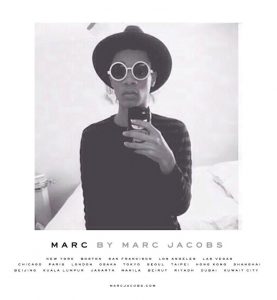Doing more with less is what every marketing manager hopes for but efficiency is easier said than done. Smaller companies might even feel they are too niche to be doing anything at all.
If you are exhausted from handling too many marketing tasks (or the mere thought of it), then it’s time to change things up. Here are four suggestions that will help you become more efficient in managing your marketing:
Stop micromanaging
Managers love managing – there is no doubt about it. In marketing that’s no different. When coordinating multiple campaigns at different stages, it might seem counter-intuitive to take your hands off everything. However, you have to remember that you have hired talented people to do the job.
Micromanaging is a bad habit which, more often than not, will actually slow down progress, screwing your own deadlines in the process. You don’t need to take the lead on every single task. Learning how to delegate work will not only help you stay sane, but gives you the time and space to see the bigger picture – which is actually your task. Remember that you are a marketing manager – not a graphic designer nor a copywriter.
If you trust in your hiring choices, then your teams don’t need micromanaging. They need to be empowered with information and space to manage themselves. This is true for in-house marketing departments as well as agencies that support your efforts.
Get help if you are understaffed
You know what to do, but you simply don’t have the resources to execute it yourself – so don’t even try. Smaller companies often try to manage all their marketing efforts in-house, sometimes relying on one person to ‘do it all’. Other companies operating in niches often disregard marketing altogether.
Hiring a marketing generalist to take care of newsletters, social media, blogs, and events will eventually cost just as much as using external partners. But it won’t get you the same outcome.
Marketing is results-driven, but tracking content and performance across multiple channel and platforms can become tedious. Use the resources of external partners to combine your marketing reporting and tracking in one platform. Don’t get me wrong – you still have to define your marketing goals. But working with agencies to plan, execute, and track marketing campaigns will make your work a lot easier.
Don’t chase every marketing trend
The world of marketing is fast-paced, ever-changing, and vast – touching everything from social media and content to PR and web design. Staying up-to-speed is your job, but not every trend will add value to your business. Just because Snapchat is hot, you don’t have to create daily snaps.
Being an expert in every marketing-related field is near-impossible. Specialised agencies can help you to fill your knowledge and resource gaps. If social media is your weakness, then hire an agency that specialises in it.
You need to understand what works for your brand and what doesn’t. Of course, it’s important to be informed about trends, but you shouldn’t let your goals out of sight. If the majority of your leads come via your website, you should focus on your blog instead of Snapchat.
Reconnect marketing & sales
Especially in larger companies, it isn’t uncommon to encounter a disconnect between marketing and sales. While both are separate departments and work independently, they actually should work directly together – after all, they are chasing the same goals.
Establish a process that helps to connect these two departments. Create effective communication channels, set up regular meetings, and catch-ups. Being clear about objectives and how to achieve them together will help to connect these departments more closely. In the long run, it will simplify your work.
Bottom Line
- Make the right hires, so you can delegate tasks and empower others
- Get help to plan, execute, and track your marketing
- You are never too niche to do marketing
- Focus on what is bringing results – not trends
- Create synergies across departments to achieve your goals
Need help with managing your marketing efforts? Get in touch with us at [email protected]







 Fact: It’s unlikely you will lead a life like Samantha Jones
Fact: It’s unlikely you will lead a life like Samantha Jones


